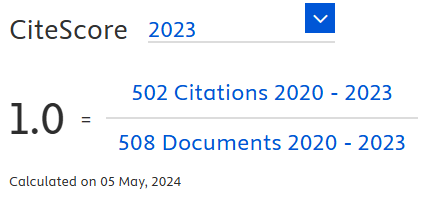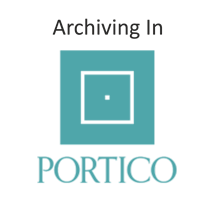Water Quality Index for Assessing Water Purification Ecosystem Services in Jakarta Urban Lake
DOI:
https://doi.org/10.18006/2025.13(2).204.212Keywords:
Ecosystem services, Lake, Pollutant, Water, WQIAbstract
This article aims to assess the ecosystem services related to water purification by analyzing the water quality conditions of three lakes in Jakarta, each with distinct characteristics. The analysis utilizes both national quality standards and the Water Quality Index (WQI). Water samples collected during the rainy and dry seasons were evaluated using the WQI, which combines various physical, chemical, and biological parameters into a single standardized score, comprehensively representing overall water quality. The study found that several water quality data points did not meet national standards for recreational use due to high levels of water pollutants. The fluctuating WQI values across the seasons indicated that seasonal variability significantly impacts water quality. The WQI scores for the lakes were categorized as medium to poor, with scores of 51.40 for Situ Babakan Lake, 45.20 for Srengseng Urban Forest Lake, and 46.20 for South Sunter Lake. Additionally, the results highlighted that water purification ecosystem services are influenced by the surrounding landscape conditions, human activities, and the presence of wastewater treatment plant (WWTP) facilities. This information is expected to provide valuable insights for local government agencies to enhance lake water quality within environmental policy frameworks.
References
Abdusalam, Y. H., Sujaul, I. M., Abdul Karim, M. D., Salah, M. G., Idris Ali, M., & Ramli, N. I. (2019). Assessment of water quality in the vicinity of Chini Lake, Malaysia. Bangladesh Journal of Botany, 48(4), 1037–1046. https://doi.org/10.3329/bjb.v48i4.49052. DOI: https://doi.org/10.3329/bjb.v48i4.49052
Akhtar, N., Ishak, M. I. S., Ahmad, M. I., Umar, K., Md Yusuff, M. S., Anees, M. T., Qadir, A., & Almanasir, Y. K. A. (2021). Modification of the water quality index (Wqi) process for simple calculation using the multi-criteria decision-making (mcdm) method: A review. Water (Switzerland), 13(7): 1-34. https://doi.org/10.3390/w13070905. DOI: https://doi.org/10.3390/w13070905
Ali, F., Lestari, D. L., Putri, M. D., & Azmi, K. N. (2024). Mapping Sanitation Risk at the Hamlet Level: A Comprehensive Assessment of Sub-District in Central Jakarta. International Journal of Technology, 15(6), 1936–1945. https://doi.org/10.14716/ijtech.v15i6.6159. DOI: https://doi.org/10.14716/ijtech.v15i6.6159
Anderson, E. P., Jackson, S., Tharme, R. E., Douglas, M., Flotemersch, J. E., et al. (2019). Understanding rivers and their social relations: A critical step to advance environmental water management. Wiley Interdisciplinary Reviews: Water, 6(6), 1–21. https://doi.org/10.1002/WAT2.1381. DOI: https://doi.org/10.1002/wat2.1381
Brontowiyono, W., Boving, T., Asmara, A. A., Rahmawati, S., Yulianto, A., Wantoputri, N. I., Lathifah, A. N., & Andriansyah, Y. (2022). Communal wastewater treatment plants’ effectiveness, management, and quality of groundwater: a case study in Indonesia. Water, 14(19), 1–23. https://doi.org/10.3390/w14193047. DOI: https://doi.org/10.3390/w14193047
Cardoso, M. C., Alves, H. da S., Costa, I. C. N. P., & Vieira, T. A. (2021). Anthropogenic actions and socioenvironmental changes in lake of Juá, Brazilian Amazonia. Sustainability, 13(16): 1-15. DOI: https://doi.org/10.3390/su13169134
Carstens, D., & Amer, R. (2019). Spatio-temporal analysis of urban changes and surface water quality. Journal of Hydrology, 569, 720–734. DOI: https://doi.org/10.1016/j.jhydrol.2018.12.033
Cole, L. J., Stockan, J., & Helliwell, R. (2020). Managing riparian buffer strips to optimise ecosystem services: A review. Agriculture, Ecosystems and Environment, 296(2), 1-12. https://doi.org/10.1016/j.agee.2020.106891. DOI: https://doi.org/10.1016/j.agee.2020.106891
Collins, C. M. T., Cook-Monie, I., & Raum, S. (2019). What do people know? Ecosystem services, public perception and sustainable management of urban park trees in London, U.K. Urban Forestry and Urban Greening, 43, 1-13. DOI: https://doi.org/10.1016/j.ufug.2019.06.005
Effendi, H., Muslimah, S., & Permatasari, P. A. (2018). Relationship between land use and water quality in Pesanggrahan River. IOP Conference Series: Earth and Environmental Science, 149(1), 1–9. https://doi.org/10.1088/1755-1315/149/1/012022. DOI: https://doi.org/10.1088/1755-1315/149/1/012022
Fashae, O. A., Ayorinde, H. A., Olusola, A. O., & Obateru, R. O. (2019). Landuse and surface water quality in an emerging urban city. Applied Water Science, 9(2), 1–12. https://doi.org/10.1007/s13201-019-0903-2. DOI: https://doi.org/10.1007/s13201-019-0903-2
Gebremedhin, S., Getahun, A., Anteneh, W., Bruneel, S., & Goethals, P. (2018). A drivers-pressure-state-impact-responses framework to support the sustainability of fish and fisheries in Lake Tana, Ethiopia. Sustainability, 10(8), 1–20. https://doi.org/10.3390/su10082957. DOI: https://doi.org/10.3390/su10082957
Gradilla-Hernández, M. S., de Anda, J., Garcia-Gonzalez, A., Montes, C. Y., Barrios-Piña, H., Ruiz-Palomino, P., & Díaz-Vázquez, D. (2020). Assessment of the water quality of a subtropical lake using the NSF-WQI and a newly proposed ecosystem specific water quality index. Environmental Monitoring and Assessment, 192(5): 1-19. https://doi.org/10.1007/s10661-020-08265-7. DOI: https://doi.org/10.1007/s10661-020-08265-7
Grizzetti, B., Liquete, C., Pistocchi, A., Vigiak, O., Zulian, G., Bouraoui, F., De Roo, A., & Cardoso, A. C. (2019). Relationship between ecological condition and ecosystem services in European rivers, lakes and coastal waters. Science of the Total Environment, 671, 452–465. DOI: https://doi.org/10.1016/j.scitotenv.2019.03.155
Gross, J., & Ouyang, Y. (2021). Types of urbanization and economic growth. International Journal of Urban Sciences, 25(1), 71–85. https://doi.org/10.1080/12265934.2020.1759447. DOI: https://doi.org/10.1080/12265934.2020.1759447
Gwimbi, P., George, M., & Ramphalile, M. (2019). Bacterial contamination of drinking water sources in rural villages of Mohale Basin, Lesotho: Exposures through neighbourhood sanitation and hygiene practices. Environmental Health and Preventive Medicine, 24(33), 1–7. https://doi.org/10.1186/s12199-019-0790-z. DOI: https://doi.org/10.1186/s12199-019-0790-z
Indonesia Ministry of Health. (2021). Profil Kesehatan Indonesia 2021 [Indonesia Health Profile 2021]. Jakarta: Ministry of Health of the Republic of Indonesia. Retrieved from https://www.kemkes.go.id/id/profil-kesehatan-indonesia-2021.
Indonesian Government. (2021). Annex VI on national water quality standards – Government Regulation No. 22 of 2021 concerning the implementation of environmental protection and management (Vol. 1, No. 078487A, p. 483). State Secretariat of the Republic of Indonesia.
Koçer, M. A. T., & Sevgili, H. (2014). Parameters selection for water quality index in the assessment of the environmental impacts of land-based trout farms. Ecological Indicators, 36, 672–681. https://doi.org/10.1016/j.ecolind.2013.09.034. DOI: https://doi.org/10.1016/j.ecolind.2013.09.034
Kritzberg, E. S., Hasselquist, E. M., Škerlep, M., Löfgren, S., Olsson, O., Stadmark, J., Valinia, S., Hansson, L. A., & Laudon, H. (2020). Browning of freshwaters: Consequences to ecosystem services, underlying drivers, and potential mitigation measures. Ambio, 49(2), 375–390. https://doi.org/10.1007/s13280-019-01227-5. DOI: https://doi.org/10.1007/s13280-019-01227-5
Li, Q., Zhu, Y., Chen, Q., Li, Y., Chen, J., Gao, Y., & Lin, P. (2021). Spatio-temporal dynamics of water quality and eutrophication in Lake Taihu, China. Ecohydrology, 14(5): 1-14. https://doi.org/10.1002/eco.2291. DOI: https://doi.org/10.1002/eco.2291
Martinez, R., & Masron, I. N. (2020). Jakarta: A city of cities. Cities, 106, 1-11. DOI: https://doi.org/10.1016/j.cities.2020.102868
Moshi, H. A., Shilla, D. A., Kimirei, I. A., O’Reilly, C., Clymans, W., Bishop, I., & Loiselle, S. A. (2022). Community monitoring of coliform pollution in Lake Tanganyika. PLoS ONE, 17, 1–18. https://doi.org/10.1371/journal.pone.0262881. DOI: https://doi.org/10.1371/journal.pone.0262881
Nagy-Kovács, Z., Davidesz, J., Czihat-Mártonné, K., Till, G., Fleit, E., & Grischek, T. (2019). Water quality changes during riverbank filtration in Budapest, Hungary. Water, 11(2), 1–14. https://doi.org/10.3390/w11020302. DOI: https://doi.org/10.3390/w11020302
Nakhle, P., Ribolzi, O., Boithias, L., Rattanavong, S., Auda, Y., et al. (2021). Effects of hydrological regime and land use on in-stream Escherichia coli concentration in the Mekong basin, Lao PDR. Scientific Reports, 11(1), 1–17. https://doi.org/10.1038/s41598-021-82891-0. DOI: https://doi.org/10.1038/s41598-021-82891-0
Noori, R., Berndtsson, R., Hosseinzadeh, M., Adamowski, J. F., & Abyaneh, M. R. (2019). A critical review on the application of the National Sanitation Foundation Water Quality Index. Environmental Pollution, 244, 575–587. https://doi.org/10.1016/j.envpol.2018.10.076. DOI: https://doi.org/10.1016/j.envpol.2018.10.076
Oertli, B., & Parris, K. M. (2019). Review: Toward management of urban ponds for freshwater biodiversity. Ecosphere, 10(7). https://doi.org/10.1002/ecs2.2810. DOI: https://doi.org/10.1002/ecs2.2810
Piaggio, M., & Siikamäki, J. (2021). The value of forest water purification ecosystem services in Costa Rica. Science of the Total Environment, 789, 1-9. https://doi.org/10.1016/ j.scitotenv.2021.147952. DOI: https://doi.org/10.1016/j.scitotenv.2021.147952
Qadri, H., & Bhat, R. A. (2020). The Concerns for Global Sustainability of Freshwater Ecosystems. Fresh Water Pollution Dynamics and Remediation, 1(1), 1–13. https://doi.org/10.1007/978-981-13-8277-2. DOI: https://doi.org/10.1007/978-981-13-8277-2_1
Romdania, Y., Herison, A., Susilo, G., & Novilyansa, E. (2018). Kajian penggunaan metode IP, STORET, dan CCME WQI dalam menentukan status kualitas air. Wahana Komunikasi Dan Informasi Geografi, 18(1), 1–13. https://doi.org/10.1179/ 1432891715Z.0000000001983. DOI: https://doi.org/10.21009/spatial.181.05
Sagar, V., Joseph, S., P.S, A., A.M, S., Ghermandi, A., & Kumar, A. (2023). A coastal Ramsar site on transition to hypoxia and tracking pollution sources: a case study of south-west coast of India. Environmental Monitoring and Assessment, 195(1), 1-28. https://doi.org/10.1007/s10661-022-10602-x. DOI: https://doi.org/10.1007/s10661-022-10602-x
Sari, L. A. D., Susanto, D., & Mukhlison. (2022). The tree diversity of Srengseng Urban Forest in DKI Jakarta. Jurnal Penelitian Kehutanan Wallacea, 11(1), 13–20. DOI: https://doi.org/10.18330/jwallacea.2022.vol11iss1pp13-20
Sula, E., Aliko, V., Barceló, D., & Faggio, C. (2020). Combined effects of moderate hypoxia, pesticides and PCBs upon crucian carp fish, Carassius carassius, from a freshwater lake- in situ ecophysiological approach. Aquatic Toxicology, 228, 1-11. https://doi.org/10.1016/j.aquatox.2020.105644. DOI: https://doi.org/10.1016/j.aquatox.2020.105644
Tammeorg, O., Nürnberg, G., Niemistö, J., Haldna, M., & Horppila, J. (2020). Internal phosphorus loading due to sediment anoxia in shallow areas: implications for lake aeration treatments. Aquatic Sciences, 82(3), 1–10. https://doi.org/10.1007/s00027-020-00724-0. DOI: https://doi.org/10.1007/s00027-020-00724-0
Thapa, S., Wang, L., Koirala, A., Shrestha, S., Bhattarai, S., & Aye, W. N. (2020). Valuation of Ecosystem Services from an Important Wetland of Nepal: A Study from Begnas Watershed System. Wetlands, 40(5), 1071–1083. DOI: https://doi.org/10.1007/s13157-020-01303-7
Widaningsih, T. T., Diana, R., & Rahayunianto, A. (2020). Community based cultural tourism development setu babakan, jakarta. Journal of Environmental Management and Tourism, 11(2), 486–495. https://doi.org/10.14505/jemt.v11.2(42).26. DOI: https://doi.org/10.14505//jemt.v11.2(42).26
Downloads
Published
How to Cite
License
Copyright (c) 2025 Journal of Experimental Biology and Agricultural Sciences

This work is licensed under a Creative Commons Attribution-NonCommercial 4.0 International License.












